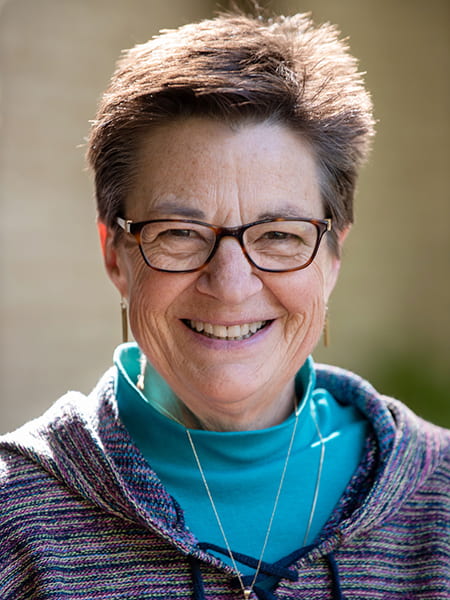
Creating learning and working environments that demonstrate pride in STEM
A friend of mine worked as a research scientist at a prestigious university medical school. Tona (name changed) was never sure if the hostilities from female colleagues were because Tona identified as lesbian/queer or because their preferred pronouns were they, them, theirs.
Tona was targeted with hazing-like experiences in the workplace, such as having the desk and chair soiled with syrup and corn flakes. Tona’s contributions during team meetings were ignored or met with shock that something of value was contributed. When Tona filed a complaint with the university, the male supervisor disciplined them for speaking up.
Tona’s scientific resumé and accomplishments offered many options, so Tona left the medical school, moved away from St. Louis and is now healing in a new work environment where their contributions are valued, and different gender identities and/or sexual orientations are welcomed with acceptance and affirmation.November 18th is PRIDE in STEM Day, an opportunity to celebrate and highlight the work and barriers of our LGBTQIA+ (lesbian, gay, bi-sexual, transgender, queer/questioning, intersexed, asexual) colleagues and students in STEM (science, technology, engineering, math). The date is symbolic of the 60th anniversary of American astronomer and gay activist Frank Kameny’s U.S. Supreme Court fight against workplace discrimination. This fight continues today.
LGBT in Climate Physics, a report based on a 2015 survey published by the American Physical Society, revealed:
- thirty-six percent of LGBT physicists reported they considered leaving their workplaces or schools in the prior year.
- one in three physicists in the U.S. said they were urged to “stay in the closet” to progress in their careers, and
- half of the transgender or gender non-conforming physicists reported being harassed in their own departments.
In 2019 Exploring The Workplace For LGBT+ Physical Scientists, one in five trans professionals indicated they often considered leaving their workplaces due to work environments that felt hostile.
Retention of sexual minority STEM students is also a challenge. According to Coming out in STEM: Factors affecting retention of sexual minority STEM students, a 2018 national longitudinal survey from the Higher Education Research Institute found sexual minority students were seven percent less likely to be retained in STEM programs (compared to their heterosexual peers), and they reported switching to non-STEM studies.
We know a welcoming environment benefits us all, and an inclusive environment requires our consciousness and vigilance to confront historic bigotry, past practices, uninspected attitudes, and actions that contradict what we say we value.
None of us is definable by a single characteristic, such as gender or sexual orientation. We have complex identities including our race, age, education, class, faith, etc. We know a welcoming environment benefits us all, and an inclusive environment requires our consciousness and vigilance to confront historic bigotry, past practices, uninspected attitudes, and actions that contradict what we say we value. STEM has a history that has favored white, heterosexual men. As we seek sex and race parity in STEM, we are challenged to remember that one’s LGBTQIA+ identity (which intersects with sex and race) is also part of what makes us all who we are. We need to affirm all of our identities and eradicate the possibility that any identity is rendered invisible, “less than,” wrong, or laughable.
As educators and professionals, here are a few questions we can ask ourselves as we listen, learn and grow:
What do I believe?
- Is the underrepresentation of women, racial and ethnic minorities, and LGBTQIA+ in STEM a problem?
- Do I believe that diverse teams are more likely to reach scientific breakthroughs and technological innovations because people who bring different perspectives to a problem envision different solutions?
What have I observed or experienced that invites interruption?
- Workplace policies and procedures that don’t adequately support employees/students who are not heterosexual and/or cisgender?
- Individuals at work or school addressed or referred to with incorrect use of preferred pronouns?
- Casual insensitive humor, even when not maliciously intended, that targets marginalized students/employees?
How can I demonstrate my beliefs?
- Engage in intentional, authentic, inclusive, non-judgmental conversations about differences, families, experiences
- Initiate an audit that provides feedback about whether a safe and welcoming environment is present in a school/or workplace
- Implement inclusive mentoring programs that also recognize LBGTQIA+ identities
- Organize and participate in professional development designed to elevate culture, climate, conversation and commitment to diversity and inclusion and inclusive practices in early childhood, K-12 schools, academia, labs and industry
- Develop and join advocacy efforts that support LGBTQIA+ colleagues/students.
ISP Blog Posts
valuing science learning
Feb 10 2023
addressing root causes
Feb 2 2023
It’s All About the Place
Dec 14 2022
Pride in STEM
Nov 17 2022
Challenging Narratives
Sept 21 2022
Embracing Diversity
May 24 2022
Impacting Science Learning
May 20 2022
Math Identity
April 23 2022
SLPS Principal Fellowship
Dec 12 2021

Deborah Holmes, PhD is the STEMpact Project Manager/Facilitator for the STEM Teacher Quality Initiative. She was assistant superintendent for curriculum and instruction in the Kirkwood School District from 1990 to 2011, after serving as principal of Brittany Woods Middle and Jackson Park Elementary Schools in University City. She has served as adjunct faculty at two St. Louis area universities, is a certified strategic planner, and has been responsible for assessment and curricular programs, birth through Grade 12. Author of numerous teacher resource books, articles and professional publications, Deborah has been an administrative coach and associate with Education Equity and The Praxis Group, serving as a facilitator for Diversity, Equity, Inclusion and ABAR work in schools and workplaces. She earned undergraduate and graduate degrees from the University of Kansas and a doctoral degree from St. Louis University.